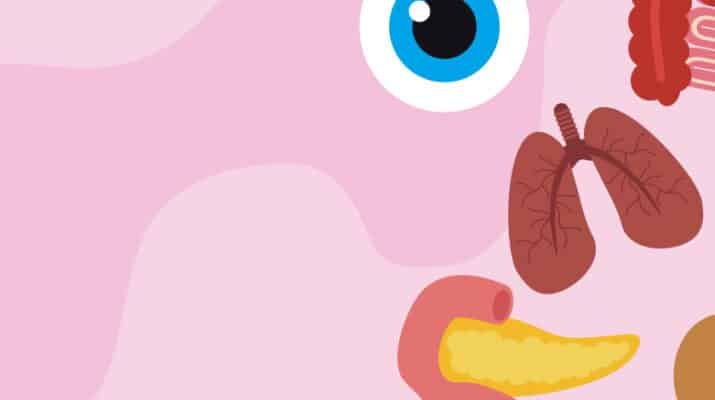By Deborah Jeanne Sergeant
When it comes to organ donation designations, New York could do better to meet the need.
According to the US Health Resources and Services Administration, 105,800 people nationwide are waiting for an organ donation. More than 8,500 of those are New Yorkers and about 500 of those will die before they receive a transplant, according to an Excellus BlueCross BlueShield report issued March 25, 2022.
“These aren’t just statistics, but rather our loved ones, coworkers, and neighbors,” Lorna Fitzpatrick, vice president medical affairs and senior medical director at Excellus BCBS, said in a statement. “We can increase their odds for a successful donor match by increasing the number of people who register to be donors.”
On average, each donor can save eight lives and enhance 75 more.
Despite ranking as one of the highest states for donor need, only 49% of New Yorkers eligible to donate have enrolled in the Donate Life Registry; 63% is the national average.
New York-Presbyterian, a healthcare system in New York City, stated that as of 2017, New York state ranks last in the nation for the number of enrollees.
“Why it’s so low is a question that’s been asked for many years,” said Nancy Ryan, director of development for Finger Lakes Donor Recovery Network, the federally designated donor recovery organization serving 20 counties in Upstate. “In New York state, we have come a long way. It’s assumed nothing has changed because we’re a low-performing state. We’ve worked hard to increase our enrollment rates.”
Ten years ago, the New York state enrollment rate for donors was 29% but is nearly 50% now, which Ryan counts as an important increase. Ryan believes that increasing the number of methods for singing up for the NYS Donate Life Registry has helped the rate inch upward. Regardless of how or where a donor registers, it goes to the NYS Donate Life Registry.
Myths about medical care prevent some people from registering, such as critically ill or injured patients receiving subpar care because doctors want to harvest their organs.
“As a physician in the ICU, we do everything we can to save our patients,” said Dorgam Badran, critical care physician at St. Joseph’s Health who chairs the organ donor council at St. Joseph’s Health.
Since St. Joseph’s is not a transplant center, Badran sees only a part of the donation process, typically in the ICU setting.
“Donation happens after brain death or after circulatory death,” he said. “That’s for organs. After the death, it’s tissue and eye donation. Unfortunately, when the time comes and the patient is extremely sick and on life support and the family or the patient decides that they want to withdraw life support, that’s when the brain or circulatory death happens.”
New York requires two physicians to certify brain death and meet extensive criteria for physicians to declare death. At that point, the hospital contacts FLDRN as required by law to make them aware of the brain death or imminent removal of life support so that FLDRN can check if the patient is a registered donor.
“We have no knowledge of that,” Badran said. “We have no access to that information.”
FLDRN representatives speak with the family about consent and seek a match to any organs that may be usable.
Some people resist signing up for organ donation as they assume that their family members would want to make that decision. Ryan said that selecting registration in advance can provide comfort to family members who do not have to make that decision. It can also help them feel that their loved one’s loss can at least benefit someone else.
“Is that something you’d want your family to decide at that worst possible moment?” Ryan said. “Make an informed decision if you want to give the gift of life and document that. That’s alleviating the responsibility from your family.”
Some people assume that their body is too old, ill or unusual to help others. However, Ryan said that no medical information is gathered upon registration.
“At the time of someone’s death, that’s when decisions are made about what can be donated,” she said. “Don’t rule yourself out. There’s no need to play doctor and decide if you’re led a healthy enough lifestyle. By ruling yourself out, you’re possibly ruling yourself out of saving someone’s life.”
Ryan said that many people assume that religion forbids organ donation. Most major world religions support organ and tissue donation, viewing it “as the most generous last act anyone could do.”
She added that any religious, cultural or familial beliefs should be discussed before deciding about organ donation.
“We don’t claim to be experts in knowing every culture and scenario,” Ryan said. “It’s such a personal decision. Have that conversation with your family and faith leader and a trusted healthcare professional. Say, ‘I’m not sure about this; can I talk this through with you?’ If you decide you don’t want to be a donor, tell your family. That’s important for your family to know so they’re not struggling with this decision.”
According to Health Resources & Services Administration, the most common transplants nationwide in 2021 were kidney (24,670, with 90,483 still waiting); liver (9,236, with 11,891 still waiting); heart (3,817, with 3,502 still waiting); lung (2,524 with 1,051 still waiting) and other (1,108, with 290 still waiting).
The “other” category includes skin, face, hands and abdominal wall. Some things such as a kidney, bone marrow and part of the liver may be donated by living donors. Upstate University Hospital in Syracuse represents the only transplant programs for kidney or pancreas transplants in Upstate New York.
Need for Organs in USA
The most common transplants in 2021 in NYS, according to Finger Lakes Donor Recovery Network.
Organ — No. of Transplants — People on Wait List
Kidney — 24,670 —90,483
Liver — 9,236 — 11,891
Heart — 3,817 — 3,502
Lung — 2,524 — 1,051

